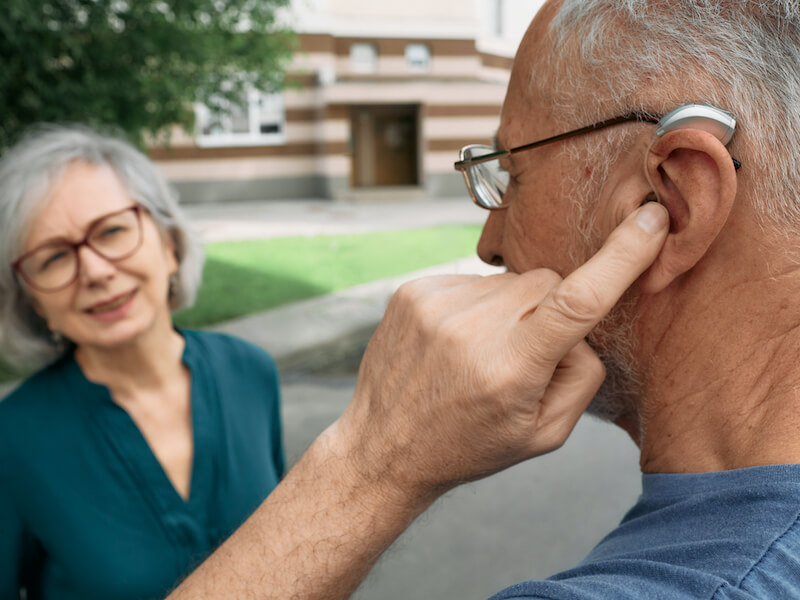
Have you ever had your internet cut right as you’re getting to the best part of your favorite Netflix movie? You sit and watch that spinning circle instead of learning about who won that cooking competition. And so you just wait. Perhaps it’s your modem, might be your router, possibly it’s the internet company, or maybe it’ll just fix itself. It sort of stinks.
Technology can be enormously frustrating when it doesn’t work correctly. Your hearing aids certainly fall into this category. When they’re functioning correctly, hearing aids can help you remain connected with the ones you love and better hear co-workers when they speak to you.
But when they quit working, your hearing loss symptoms can abruptly become a lot more frustrating. You’ve been disappointed by the technology you count on. How do hearing aids just quit working? So what can you do? Well, there are three prevalent ways that hearing aids can fail, here’s how you can begin to identify and troubleshoot those problems.
Hearing aids can often have three common issues
Even though hearing aids are complex technology, people may encounter three common issues with them. Let’s have a look at possible causes of these issues and potential fixes.
Whistling and feedback
Maybe you suddenly start to hear a terrible high-pitched whistling while you’re attempting to have a conversation with a friend or family member. Or perhaps you detect a bit of feedback. And so you think, “Why am I hearing whistling in my hearing aids? This is odd”.
Here are three potential issues that could be causing this whistling and feedback:
- Your hearing aids may not be sitting in your ears properly. Try to take them out and re-seat them. You can also try reducing the volume (if this works, you might find some temporary relief, but it also likely means that the fit isn’t quite right and you should consult us about it).
- The tubing that connects the hearing aid with the earmold, on behind-the-ear models, can sometimes become compromised. Try to inspect this tubing as well as you can and make sure nothing is loose and the tube doesn’t appear damaged.
- The functionality of your hearing aid can be affected by earwax buildup in your ear canal. This is a relatively common one. Whistling and feedback are often one outcome of this sort of earwax buildup. You can attempt to clear some of the earwax out (never use a cotton swab) and if that fails, you can get some help from us.
Depending on the root cause of the feedback, we can help you resolve these problems if you can’t fix them on your own.
No sound coming from your hearing aids
The main goal of hearing aids is to produce sound. That’s their main function! So if you find yourself thinking, “I don’t hear any sound in my hearing aid,” well, then something is definitely wrong. So what could be the cause when hearing aids work but no sound comes out? Well, there are a few things:
- Earwax buildup: Here we go again with the earwax! Inspect your device for signs of earwax on the microphone or speakers or any sensitive parts. Keep your device really clean.
- Power: Everybody forgets to turn their hearing aids on once in a while. Check for this first. Then you can cross that of the list of possible issues.
- Your settings: Cycle through the personalized settings if your device has them. It’s possible your hearing devices are not on the right custom program (so maybe your hearing aids think you’re in a gymnasium instead of around the kitchen table). The sound you’re hearing could be off as a consequence.
- Batteries: Make sure your batteries are completely charged. And whether your batteries are rechargeable or not, it may be worth swapping them out for fresh ones.
If these steps don’t correct your issues, we may have the solution. We’ll be able to help you determine the next steps, and whether maintenance, repair, or replacement is required.
When you have your hearing aids in, you feel pain in your ears
Maybe your hearing aids are fine functionally but they hurt when you put them in. And you’re likely thinking: why do my ears ache when I use my hearing aids? You’re not as likely to use your hearing aids on a daily basis if they hurt your ears. So, why do they hurt?
- Time: Usually, it just takes some time to get used to your hearing aids. Each individual will have a different adjustment period. When you first get your new hearing aids, we can help you get a realistic idea of the adjustment period you can anticipate. If uncomfortable ears remain, speak with us about that too!
- Fit: The fit of the device is the most evident issue. Needless to say, when the fit is nice and tight, your hearing aids will work best. Which means that there can sometimes be discomfort involved in a poor fit. Some models of hearing aid can be fit to the particular shape of your ears. The better the fit, the fewer problems you’ll have with discomfort over the long run. We will be able to help you achieve the best possible fit from your devices.
Take your new hearing aid out for a test ride
Before you commit to a pair of hearing aids, it’s a smart plan to try them out for a while. Most of the time we will have loaner pairs for you to try out before you make a decision.
In fact, we can help you determine the best kind of hearing aid for your needs, adjust the fit to match your ears, and help you manage any ongoing issues you might have with your devices. In other words, when your devices quit working, you’ll have a resource that can help!
And that’s most likely more dependable than your internet company.